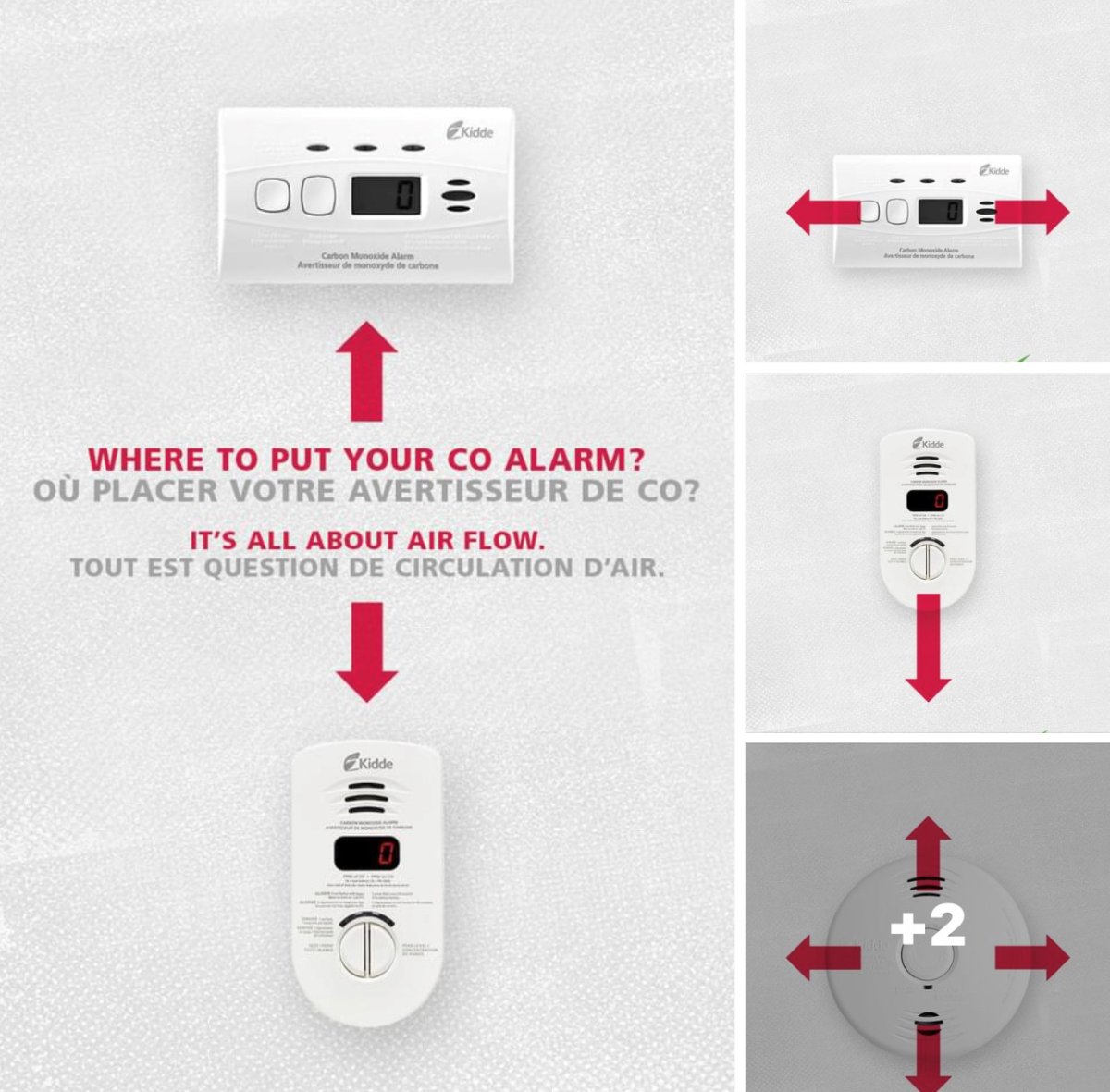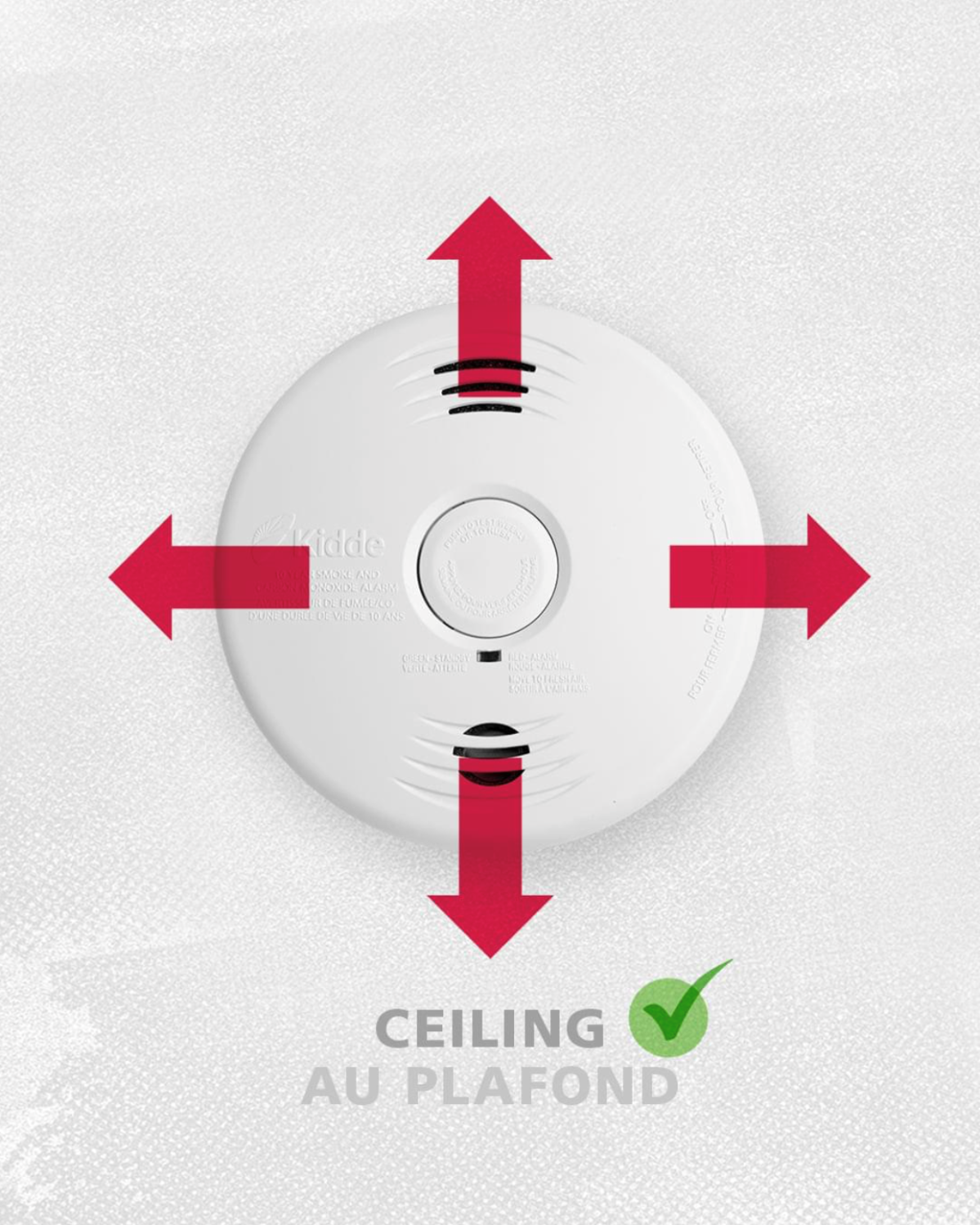Carbon monoxide (CO) has the potential to exist in up to 88 per cent of all homes, the Ontario Association of Fire Chiefs warns, and more than 65 per cent of CO-related injuries and deaths occur within homes, according to the Technical Standards and Safety Authority.

In fact, more than 300 carbon monoxide (CO)-related deaths and more than 200 hospitalizations are recorded each year in Canada, according to research from the B.C. Injury Research and Prevention Unit and the University of the Fraser Valley.
Many Canadians are aware that CO alarms can save lives by alerting homeowners to the presence of CO gas before individuals experience any serious effects from exposure. But many people don’t realize that dogs, cats and other pets can also become sick from CO exposure.
In partnership with Kidde, a manufacturer of fire safety products, we look at how to identify signs of CO poisoning in your pets and why proper alarms and alarm placement can help keep everyone in your family safe.
Recognizing the signs of CO poisoning
Carbon monoxide is an odourless, colourless gas that is produced when there is incomplete combustion of burning fuel, including natural gas, gasoline, wood, propane, charcoal or other fuels.
If there is too much carbon monoxide in the air within an improperly ventilated space, the human body replaces the oxygen in its red blood cells with carbon monoxide. That can lead to side effects that can progress quickly, posing serious danger to health and safety.
Symptoms of CO poisoning include headaches, weakness, nausea or vomiting, shortness of breath, dizziness, confusion, blurred vision and loss of consciousness, Health Canada says online.
Pets can be affected in similar ways. In fact, because they are smaller and have a higher respiratory rate than people, pets are often among the first to show symptoms.
As most pet owners already know, animals can’t relay what’s wrong, but being attuned to your pet’s behaviour could help. Nausea, vomiting and laboured breathing are some of the first signs of CO poisoning in pets; however, vomiting can easily be misdiagnosed. Drowsiness, lethargy, uncoordinated movements and bright red lips, ears and gums can also be signs.
Four-legged friends are often thought of as family members. Just as people want to be proactive about their family’s health, pet owners may want to be proactive about their pets’ health, says Sharon Cooksey, fire safety educator for Kidde.
She adds that having awareness of the risks and symptoms of CO poisoning, combined with preventive measures, is the best way to keep everyone safe. “That’s why we strongly recommend having working carbon monoxide alarms throughout the house.” Installing and maintaining the alarms, she says, is the only reliable way to be alerted to the presence of carbon monoxide so you can take action.
READ MORE: What you need to know about carbon monoxide poisoning
Installing CO alarms at home
Cooksey often hears that people have an alarm next to their furnace, but she says that’s not enough to protect the entire family. In her own home, she has an alarm in every room, on every level, as well as in the hallway.
“When installing your alarms, you want to avoid putting them in the corner where there’s dead air space,” she says. It’s also a good idea to avoid putting carbon monoxide alarms in rooms with humid conditions, like bathrooms. Placing them behind drapes or large sofas, near windows or close to fans, where turbulent air can cause alarms to not function properly, is also not recommended.
“A lot of people believe that CO collects only at the floor, but it does not,” Cooksey adds. “It can collect anywhere from the floor to the ceiling. It can also collect in one room and not another.” Because CO can disperse very unevenly throughout a home, she explains, installing multiple alarms is key to maximizing safety.”
Keeping your pets safe from carbon monoxide
A working carbon monoxide alarm in every room of the house will go a long way in protecting pets and humans alike. Cooksey says it’s important to check those alarms at least once a week and to replace them every 10 years. Units with a 10-year sealed battery, she adds, can offer extra peace of mind.
Cooksey recommends having fuel-burning appliances, such as furnaces, wood-burning fireplaces and gas dryers, cleaned and checked annually by a qualified service technician. It’s also a good idea, she says, to ensure that fresh air intake vents, exhaust vents and chimneys are clear of snow, insulation, leaves, nests and other debris.
To help keep animals safe in the event of a CO leak, include pets in escape planning and familiarize your pets with the sounds associated with fire and CO alarms, so that if one ever does go off, your pet’s first reaction won’t be to hide under the bed. Cooksey suggests practicing regularly with your pet, and for those who need a few pointers, Kidde Canada offers pet parents a video featuring pet safety training tips with celebrity pet trainer Sara Carson.
If and when an alarm does sound, get everyone out of the house immediately. Or, if you suspect your pet has suffered CO poisoning, get everyone outside, dial 911 and seek immediate care.
You can also contact your vet and ask for a CO poisoning evaluation, as a pet’s illness may indicate a problem before any humans start feeling symptoms. “If you think about the canary in the coal mine scenario, that’s really what it is,” Cooksey says.
READ MORE: Kidde Canada’s fire safety tips for pet owners
To learn more about the signs of carbon monoxide poisoning in pets and find out how to help keep your whole family safe, visit Kidde’s CO safety page.



